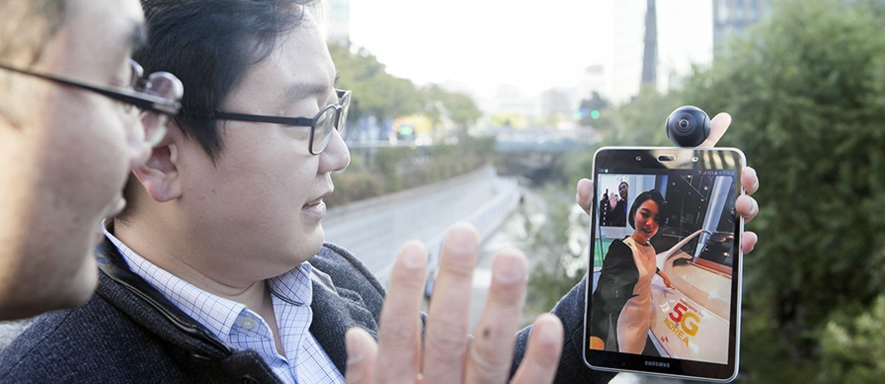South Korea’s SK Telecom announced the successful demonstration of essential technologies for 5G network communications in a real-world setting, accelerating its research and development efforts to roll out 5G services earlier than expected.
SK Telecom announced that it used an in-building 5G relay repeater operating in both 28 GHz and 3.5 GHz spectrums in the 5G trial network at the company’s Bundang office, a result of the company’s joint development with local vendors.
The in-building 5G relay repeater helps deliver seamless network connections in an indoor environment by transferring wireless signals to radio shadow areas.
The company was able to deliver speeds of up to 4Gbps using the in-building relay repeater SK Telecom jointly developed with HFR which operated in 28 GHz band. In the 28 GHz band, radio waves are more likely to move in straight lines, being blocked more sharply by obstacles with shorter radio coverage. Frequency particularly suffers more loss inside a building, where areas are divided by walls.
Ensuring the quality of indoor service is the key to 5G service rollout, which uses ultra-high frequencies. With the success of delivering gigabit speeds using the in-building relay repeater, SK Telecom is in the process of accelerating development of 5G service that customers can enjoy even in an indoor environment.
The company has also worked with SK Telesys to develop an in-building relay repeater, which can deliver 5G radio signals in 3.5 GHz using the existing mobile communications infrastructure installed inside buildings.
Since the station uses the existing antennas for 2G, 3G and LTE services, the company can reduce time to build indoor networks for 5G service by only installing the 3.5 GHz band relay repeater.
With the success of the demonstration, SK Telecom was able to develop its capabilities for 5G relay for both indoor and outdoor settings. In August, the company deployed a relay repeater in its 5G trial network near Gangnam Station in Seoul to successfully expand radio coverage in the densely populated urban area.
On the same day, SK Telecom demonstrated a 360-degree virtual reality (VR) video call using a tablet-sized device on the 5G network connecting between T.um at SK Telecom’s headquarter in Seoul, and an area near Cheonggyecheon, a stream flowing through the central district of Seoul, in collaboration with Samsung Electronics. A user was able to enjoy a 360-degree VR video call real-time even while moving in the area surrounded by high-rise buildings.
The demonstration was performed in the central business district, a perfect place to test 5G communications service as it is surrounded by high-rise buildings generating dense data blocked by many obstacles. Both companies employed the advanced technologies, including beamforming, optimal base-station positioning and network virtualization, to build a stable 5G trial network.
With the success of the demonstration on a tablet-sized 5G device, SK Telecom accelerated its research in the field of network connections to ensure the seamless operation of devices on the 5G network. The telecom giant also expects that the demonstration will add momentum to its effort to create novel services running on the 5G network that will deliver new experiences to its customers.
“The success of 5G wireless communications in the real-world environment will give us momentum to accelerate our effort to roll out 5G services earlier than expected,” said Park Jin-hyo, Senior Vice President and Head of Network Technology R&D Center at SK Telecom. “We, at SK Telecom, will continue to develop our capabilities to rollout 5G networks in order to offer differentiated services to our customers.”






